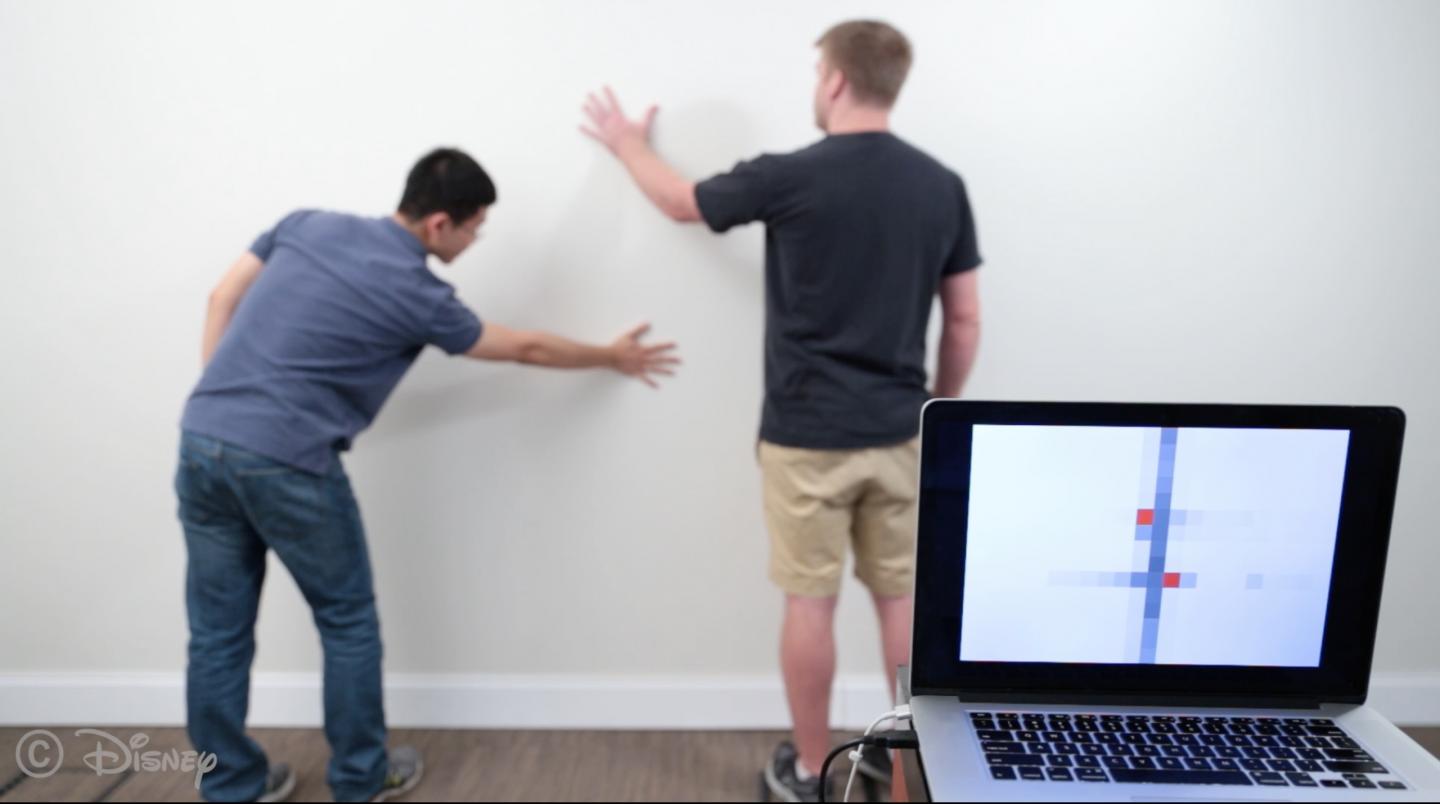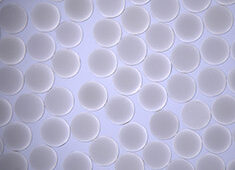
Wall++ technology developed by Carnegie Mellon University and Disney Research can turn an entire wall into a touchpad. It also serves a sensor for electromagnetic activity. Credit: Carnegie Mellon University
With smart appliances becoming all the rage, a team of researchers has found a way to convert the walls of a home or office into its own smart enabled device.
Scientists from Carnegie Mellon University used conductive paint to create electrodes across the surface of a wall, enabling it to act as both a touchpad to track the users’ touch and an electromagnetic sensor that can detect and track electrical devices and appliances.
The new capabilities of walls could allow users to place or move light switches and other control panels anywhere on the wall that is most convenient. The new system could also adjust light levels when a television set is turned on or alert a user in another location when an appliance like a washing machine or electric kettle turns off. Smart walls could also enable gamers to control their videogames using gestures.
“Walls are usually the largest surface area in a room, yet we don’t make much use of them other than to separate spaces, and perhaps hold up pictures and shelves,” Chris Harrison, an assistant professor in CMU’s Human-Computer Interaction Institute (HCII), said in a statement. “As the Internet of Things and ubiquitous computing become reality, it is tempting to think that walls can become active parts of our living and work environments.”
The researchers believe that can produce the smart walls at just $20 per square meter.
“Walls are large, so we knew that whatever technique we invented for smart walls would have to be low cost,” Zhang said.
Along with being low-cost, the researchers also sought out to make the special paint easy to apply using simple tools that do not require special skills. They discovered that painter’s tape could create a crosshatched pattern on a wall to create a grid of diamonds. Testing showed that this was the most effective electrode pattern.
After applying two coats of conductive paint with a roller, they removed the tape and connected the electrodes and finished the wall with a top coat of standard latex paint to improve the durability and hide the electrodes.
The new wall operates in two modes—capacitive sensing, where the wall essentially functions as a touchpad so when a person touches the wall the touch distorts the wall’s electrostatic field at that point, and electromagnetic sensing, where the electrode can detect the distinctive electromagnetic signatures of electrical or electronic devices, enabling the system to identify the devices and their locations.
While they have not optimized the wall for energy consumption, Zhang estimated that the wall-sized electrodes consume about as much power as a standard touch screen does.
The study was published in ACM Digital Library.




